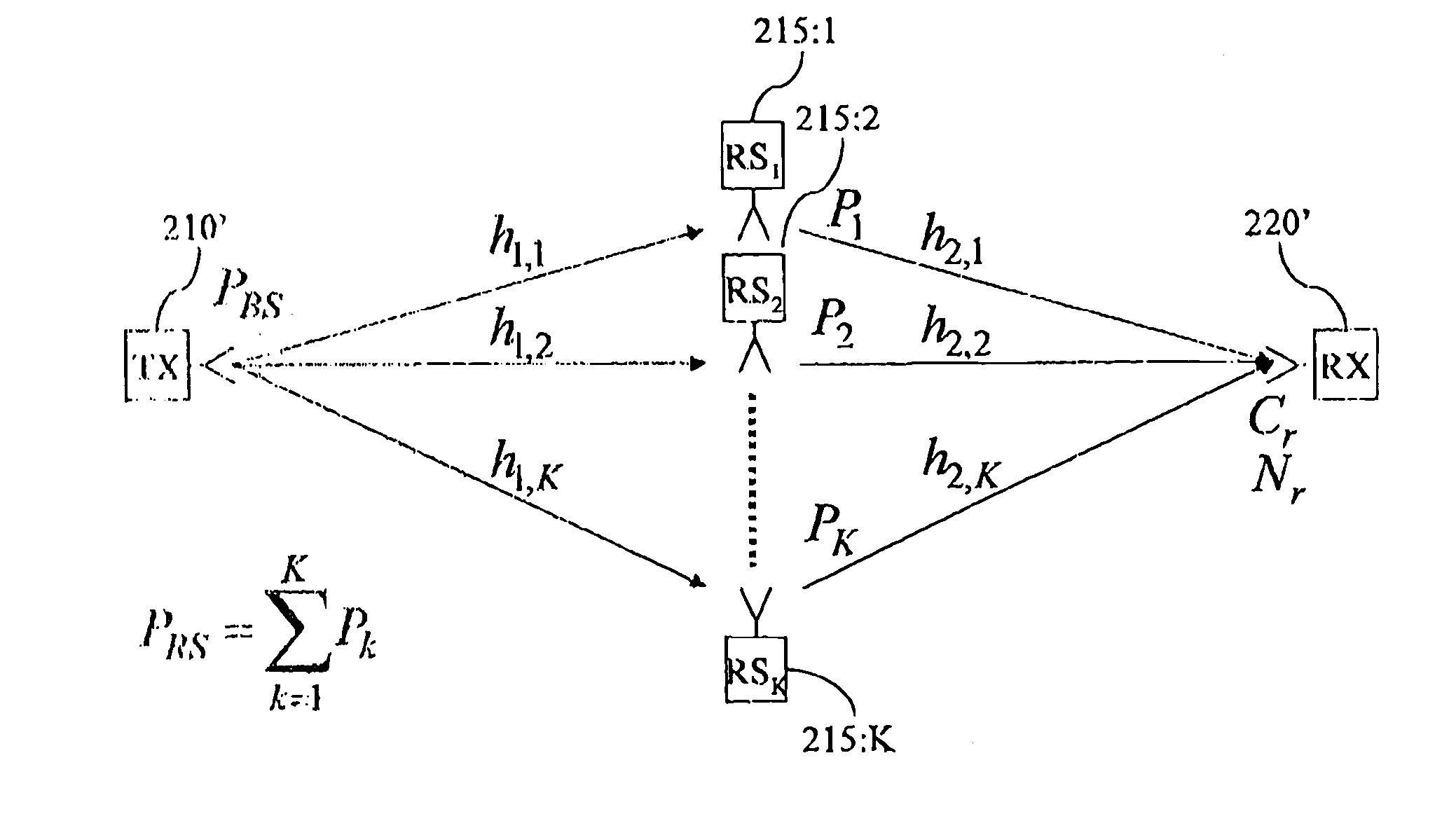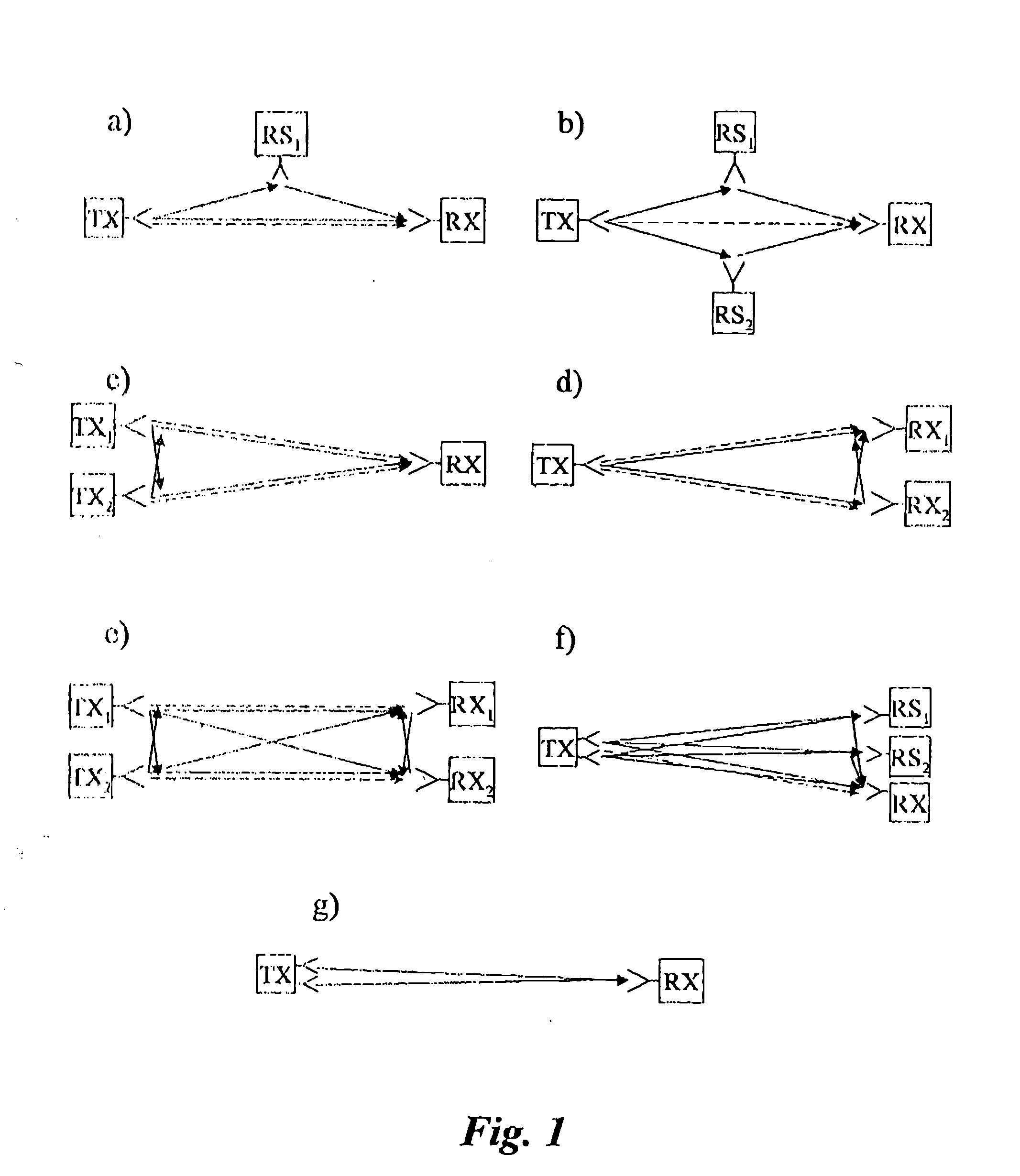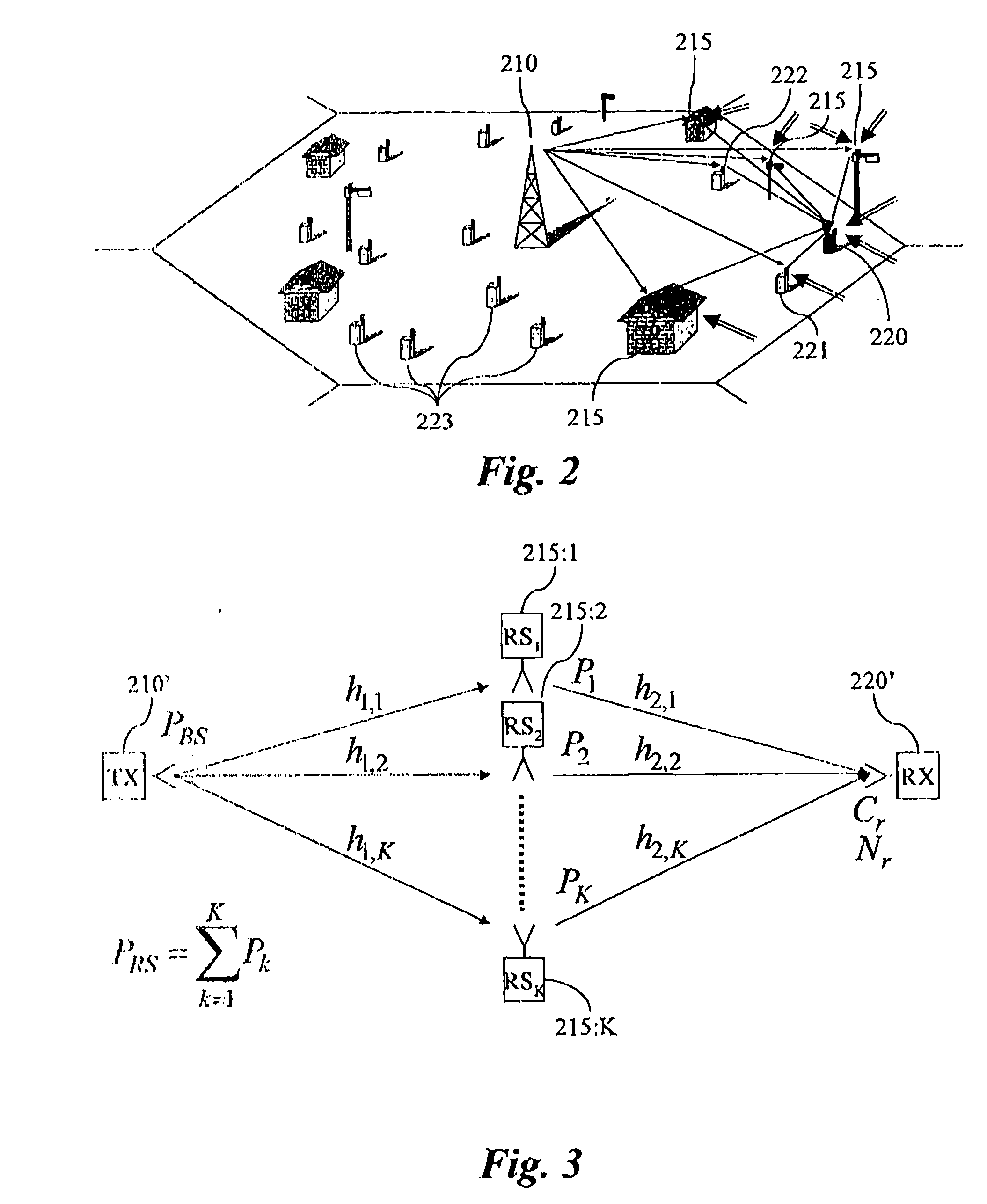Method and system for wireless communication networks using relaying
- Summary
- Abstract
- Description
- Claims
- Application Information
AI Technical Summary
Benefits of technology
Problems solved by technology
Method used
Image
Examples
Embodiment Construction
Embodiments of the invention will now be described with reference to the figures.
The network outlined in FIG. 2 is an example of a cooperative relaying network wherein the present invention advantageously is implemented. The figure shows one cell 205 of the wireless network comprising a basestation 210 (BS), a plurality of relay stations 215 (RS) and a plurality of mobile stations (MS) 220-223. As shown in the figure, the relay stations 215 are mounted on masts, but may also be mounted on buildings, for example. Fixed relays may be used as line of sight conditions can be arranged, directional antennas towards the basestation may be used in order to improve SNR (Signal-to-Noise Ratio) or interference suppression and the fixed relay may not be severely limited in transmit power as the electricity supply network typically may be utilized. However, mobile relays, such as users mobile terminals, may also be used, either as a complement to fixed relays or independently. The mobile stat...
PUM
 Login to View More
Login to View More Abstract
Description
Claims
Application Information
 Login to View More
Login to View More - R&D
- Intellectual Property
- Life Sciences
- Materials
- Tech Scout
- Unparalleled Data Quality
- Higher Quality Content
- 60% Fewer Hallucinations
Browse by: Latest US Patents, China's latest patents, Technical Efficacy Thesaurus, Application Domain, Technology Topic, Popular Technical Reports.
© 2025 PatSnap. All rights reserved.Legal|Privacy policy|Modern Slavery Act Transparency Statement|Sitemap|About US| Contact US: help@patsnap.com



